Daisy Flower: Types of Daisies
Discover the grace, beauty and versatility of the daisy family. Learn about types of daisies you can grow and how to use them in your floral designs.
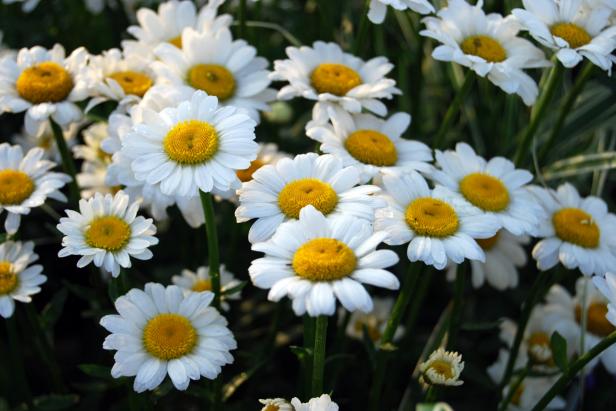
Costa Farms
Cheerful daisies, like this Shasta variety Leucanthemum 'Darling,' symbolize beauty, innocence, love or purity.

If you prompt a child to draw a picture of a flower, something like the daisy will typically emerge from the crayon. For good reason — the cheerful yellow centers surrounded by symmetrical skirts of petals are simple in their lines but striking in the feelings they stir.
Daisies are a ubiquitous symbol of positivity, innocence and new beginnings, and can be found both wild and cultivated in a range of climates. From wildflowers to annual container plants to perennial cultivars, there are many ways for gardeners to bring the lighthearted joy of daisies into their own gardens.
11 Perennials You Can’t Kill 11 Photos
Discover tough-as-nails perennials — such as shasta daisy — you don’t need a green thumb to grow.
Members of the Aster family, daisies are approachable for beginning gardeners and a boon to butterflies. Read on to learn about six common types of daisies, and how you can plant, grow, harvest and enjoy them at home.
6 Common Daisy Types
Shasta Daisy (Leucanthemum superbum)
Shasta daisy is a charming, reliable perennial that thrives in full sun with average moisture. If you have grown rudbeckia or coreopsis, you will find the care and growth habit similar for shasta daisies. Plant these perennials in the fall for the best chance at blooms the following season. Shasta daisies typically bloom white with yellow centers and make excellent cut flowers. The frilly, double-flowered varieties are especially worth seeking. The rosette of foliage reaches around 12 inches tall, producing flowering stems 18-24 inches tall.
Notable Varieties: Snowcap, Sante, Aglaia, Banana Cream, Darling Daisy, Ice Star
Hardiness Zones: 5-9
Bloom Time: late spring to late summer
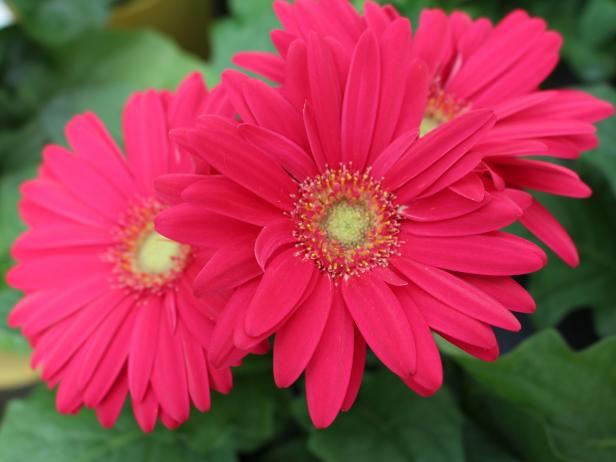
'Rose Bright Light Eye' gerbera from the Revolution series
Gerbera or Transvaal Daisy (Gerbera jamesonii)
A mainstay of the cut flower and garden center industries, gerbera daisies are known for their saturated, candy-like colors. The gerbera daisy hails from South Africa and is the national flower of Eritrea. The commonly available, hybridized gerberas are treated as annual container and bedding plants, flowering all summer in a juicy range of hues from lemon to peach to raspberry (and neutrals too, if that’s your style). The plants are compact, typically reaching 9-12 inches wide and 10-18 inches tall. In zone 8 and south, gerberas can be grown as perennials if well mulched. Clemson cooperative extension reports that gerbera daisies may be successfully overwintered indoors.
Notable Varieties: There are many — seek double, crested and full-crested types for a dramatic display
Hardiness Zones: 8-10
Bloom Time: late spring through summer

Proven Winners
‘Soprano’ African daisy variety
African Daisy or Cape Daisy (Osteospermum ecklonsis)
African daisies are an artful option for daisy lovers, blooming in a nuanced palette of shades. They boast heat, drought and deer tolerance, producing vigorously through peak summer. African daisies make a hardy cut flower and are amenable to growing from seed. Grow as an annual north of Zone 9; more southerly growers can play with perennial production.
Notable Varieties: Akila Grand Canyon Mix, Akila Sunset Shades, Zion Copper Amethyst, Blue Disc
Hardiness Zones: 9-10
Bloom Time: all summer

Shutterstock/Agnes Kantaruk
English daisy (Bellis perennis) feature a much-loved pom-pom shape.
English Daisy (Bellis perennis)
Known and loved for their playful pom-pom shaped blooms, English daisies have a standout style in the Aster family. Filling a helpful niche of cool-season color, they can be found alongside pansies, sweet alyssum and snapdragons at garden centers in autumn and early spring. Plant in cool months, either in containers or garden beds. In regions with cooler summers, English daisies may thrive through the warm season and, if they set seed, they will readily self-sow.
Notable Varieties: Pomponette, Bellissima, Habanera, Tasso
Hardiness Zones: 4-7
Bloom Time: fall and spring in warm climates; spring and summer in cool climates
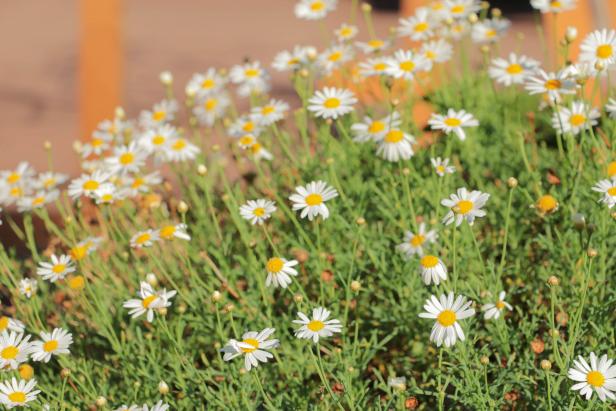
Shutterstock/fatti
Montauk Daisy (Nipponanthemum nipponicum) is a great selection for xeriscapes or rock gardens.
Montauk or Nippon Daisy (Nipponanthemum nipponicum)
Another fantastic option for cool season interest, the Montauk daisy looks similar to Shasta daisy while mirroring the cold hardiness of the English daisy. Tolerating drought as well as salty coastal conditions, this plant sports toughness equal to its beauty and is a worthy selection for xeriscapes and rock gardens. Forming a large mound up to 3 feet tall and 3 feet wide, it is a popular landscape choice. Montauk daisies must be pruned in spring through midsummer to encourage branching, avoid floppy stems and support a spectacular show of fall blooms.
Hardiness Zones: 5-9
Bloom Time: summer through the first hard frost, if well pruned (may not appear until fall in warm climates)
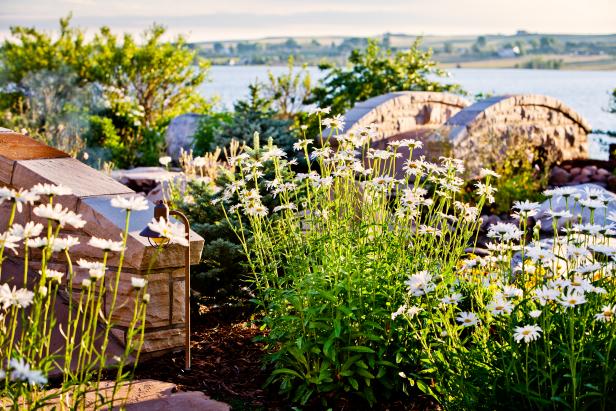
Steve Glass
Oxeye daisies provide a soft texture and vibrant white flower against this garden with strong stone features. The use of native plants in the large planting beds help to create separation amongst the architectural features of the garden.
Oxeye Daisy (Leucanthemum vulgare)
A widespread wildflower, the dainty but resilient oxeye daisy is a vigorous bloomer that is often considered invasive. Native to Europe and temperate regions of Asia, the oxeye daisy was introduced to North America in the 1800s as an ornamental plant and since has naturalized widely. Look for it in wild meadows and roadside ditches.
Before planting, consult your local cooperative extension to see if your state has restrictions in place to protect native species from oxeye’s assertive habit. Avoid introducing oxeye in pasture settings, where it is unpalatable to grazing animals and crowds out forage plants, as described by University of Nevada’s cooperative extension service.
If properly managed, oxeye daisy can be a useful food source for pollinators. Tao Orion writes that oxeye daisy serves “valuable ecological functions,” especially in areas stripped of biodiversity and soil fertility. If oxeye is ill-advised in your area, shop for native species of Aster that will offer similarly bright eyed blooms while playing nicely with the plants next door.
Hardiness Zones: 3-8
Bloom Time: spring through summer
How to Plant Daisies
Plant perennial daisies in early fall or early spring, and annual daisies after your last spring frost. Daisy options abound at local garden centers and from online nurseries. Most daisies thrive in soil enriched with compost, so incorporate a layer into your soil before planting. Check your soil’s pH, too — most prefer a neutral to slightly acidic soil. Oxeye, Montauk, and African daisies are happy with less fertile soil. Planting in full sun is typically best; in southern gardens, choose a location with morning sun and afternoon shade.
African and Shasta daisies are the simplest species to start from seed. Seeds should be surface-sown in trays and allowed to sprout under a grow light, or seeded directly into the garden. The soil should be around 70 degrees for germination.
To transplant daisies, create a divot in the soil large enough for the root ball, loosen the roots with your fingers and tuck in your plant. Nudge the soil back around the roots, being careful not to bury the leaves. The foliage should sit just above soil level. Use your hands to firm the soil around the base of the plant, helping the roots get settled, and water gently but deeply. Plant daisies 12-18 inches apart.
How to Care for Daisies
Fertilizing
Using an organic liquid or slow-release granular fertilizer according to application instructions helps to keep blooms coming consistently. Try Fox Farm’s liquid Big Bloom plant food or Espoma’s granular Flower Tone.
Weeding
The smartest way to suppress weeds is by using a layer of organic mulch; 2-3 inches of straw, pine bark or leaf mulch around your plants will keep weeds at bay, as well as help to retain moisture through the summer.
Pests and Disease
Proper drainage is key to success with daisies, as the low-growing foliage is susceptible to crown disease, powdery mildew and root rot. Allow the soil to dry between waterings. If your soil drains poorly, add organic matter to improve it or plant in raised beds or containers.
Watch out for aphids and thrips. At the first sign of infestation, spray the leaves with an organic solution of insecticidal soap or neem oil according to package instructions. Spray in the evening to avoid sunburning leaves or disrupting pollinators.
Deadheading
As long as plants haven’t fully set seed, they will continue to flower. To encourage a lengthy display of flowers, deadhead your daisies by removing spent blooms with sharp snips to just above the next leaf node.
How to Harvest Daisies
Enjoying daisies as cut flowers encourages regrowth, so share your flowers generously. Daisies should be harvested just as the flower begins to open. Cut each stem down to the next leaf node, flower bud or basal leaves rather than leaving denuded stems behind. Place directly into clean water as you harvest. Daisies are hardy cut flowers; expect 7-10 days of vase life.
Daisy Design Tips
- When arranging Shasta daisies, follow floral artist Amy Merrick’s lead and keep your composition simple. Layering daisies with other white, yellow-centered flowers of varied scales achieves an airy, romantic look. Try pairing them with chamomile or feverfew, and a cosmos like 'Afternoon White.'
- Gerbera daisies are playful by nature, so think outside the cylinder vase on your home table. Check out Mood Fleuriste’s creative, minimalist use of pale peach gerberas alongside melons and smokebush, designed with flower frogs in a still-life style.
- Charming oxeye daisies press beautifully. Create your own flower press and immortalize the feeling of wandering through a summer meadow. Display preserved blooms in a frame or shadow box.







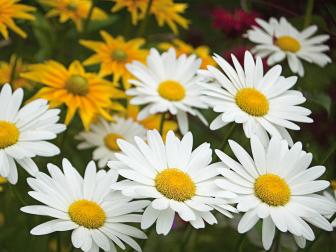

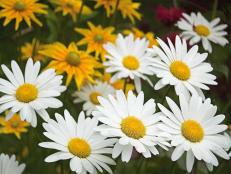


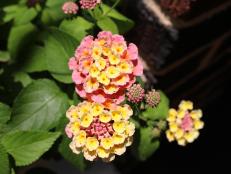


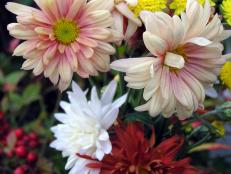

![Homegrown variety of winter squash. Homegrown winter squash. 195956_3603429601142_787136137_n[2].jpg](http://hgtvhome.sndimg.com/content/dam/images/grdn/fullset/2014/2/7/0/195956-3603429601142-787136137-n-2.jpg.rend.hgtvcom.231.174.suffix/1452646912247.jpeg)






























